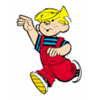My Pet World: Mom concerned over dog’s reaction to adult daughter
Dear Cathy,
I have an adult daughter on the autism spectrum. She is high-functioning and lives in an assisted living environment. When she visits, our dog, Willow, growls and barks at her. My daughter has done nothing to warrant this response, and it breaks my heart and hers to see it because she wants to have a positive relationship with Willow.
When other people visit, Willow will bark but soon rolls over to have her belly scratched. Not so with my daughter. I wonder if Willow detects that there is something "different" about my daughter from other visitors? Willow is fine when I take her to my daughter's home, and we go for walks. The problem is when my daughter is home. What can I do?
— Nancy, Middletown, Connecticut
Dear Nancy,
Willow may be picking up on subtle differences in your daughter's body language or energy that feel unfamiliar to her at home. Since Willow is calm and well-behaved during walks at your daughter’s residence, it’s likely that something in your home environment, rather than your daughter herself, is triggering Willow’s negative reactions. Regardless, the following advice will work to create a positive relationship between Willow, your daughter, and any house guest.
When your daughter visits, sit or stand between her and Willow for the first 10 minutes. Placing yourself between them may prevent Willow from feeling like she needs to protect you, which could be contributing to her defensive behavior. Also, keep the environment calm during their first 10 minutes together. You should also reward Willow for calm behavior around your daughter to reinforce these positive interactions.
During this same time, have your daughter give Willow high-value treats — those she doesn't typically get — when she arrives, so she associates your daughter's presence with something positive and enjoyable. She doesn't have to approach or sit near her to do this; she can toss them to her from across the room.
Additionally, before she visits, introduce your daughter's scent by bringing items from her home, such as clothes or a blanket, for Willow to smell. Willow might also be comforted by canine pheromones. You can buy a canine pheromone collar for Willow and canine pheromone spray to spritz on your daughter's hands or lap when she visits. Pheromones tend to have a calming effect on animals.
If Willow's behavior continues despite these efforts, consult a professional dog trainer who can observe Willow's interactions with your daughter and provide more personalized solutions. But these suggestions should help foster the positive relationship that you both hope for with Willow.
Dear Cathy,
We have a five-year-old, 16-pound Havanese. He's smart and lovable but consistently barks at dogs bigger than him. He interacts well with small dogs. Do you have suggestions to alleviate this behavior so we can walk him outside on enjoyable, safe walks? I've tried the Ultrasonic Pet trainer to distract him upon approaching a large dog with no success.
— Carole, Centerport, New York
Dear Carole,
This behavior is not uncommon, especially in smaller dogs who may feel intimidated or unsure when faced with larger dogs. Fortunately, you can take steps to alleviate this behavior and help your dog feel more comfortable during walks.
One approach is desensitization and counter-conditioning. Start by finding a distance where your dog notices a larger dog but isn't yet barking. This is your starting point, and from here, you can work to gradually decrease the distance over time.
When your dog sees the larger dog and remains calm, reward him with high-value treats — something your dog loves but doesn't get often. This helps him form a positive association with seeing larger dogs. Gradually, as he becomes more comfortable at one distance, you can decrease the space between him and the larger dog, continuing to reward him for calm behavior.
It's important to manage the situation as well. When you're on a walk and see a larger dog approaching, keep your dog's attention focused on you. You can use treats or a favorite toy to keep him from reacting to the larger dog. The goal is to engage him before he can react, keeping the focus on positive behavior. You also can turn and walk the other way, so your dog has to follow, which generally will halt the barking and allow you to reward your dog for stopping barking.
It helps to practice in a controlled environment. Can you set up training sessions with a friend who has a calm, non-reactive large dog? These practice sessions give your dog a safe space to work on his behavior and for you to work on keeping his focus on you.
_____
_____
========
(Cathy M. Rosenthal is a longtime animal advocate, author, columnist and pet expert who has more than 25 years in the animal welfare field. Send your pet questions, stories and tips to cathy@petpundit.com. Please include your name, city, and state. You can follow her @cathymrosenthal.)
©2024 Tribune Content Agency, LLC.
(c) 2024 DISTRIBUTED BY TRIBUNE MEDIA SERVICES, INC.












Comments